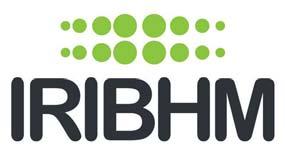
3 minute read
Sabine Costagliola Lab (IRIBHM-ULB) Expert in thyroid development disorders
by 5rXobdlLrFp
Founded in the 1960s by Prof. Jacques Dumont, IRIBHM developed pioneering research on the thyroid gland while at the same time gradually expanding its work to include cancerology, developmental biology, pharmacology, membrane receptors etc. It works with 150 researchers (ULB, FNRS, students etc.) installed on the Erasme campus of ULB and conducts around twenty projects each year.
Within IRIBHM, the team under Prof. Sabine Costagliola studies the development of the thyroid and its pathologies: cancers, functional disorders, autoimmune pathologies leading to overfunctioning of the gland, and congenital hypothyroidism affecting one child in 3,000. In the latter case, the child does not produce enough thyroid hormones due to dysfunctioning of a key protein; however, the thyroid may also be malformed or absent (dysgenesis). If not treated from the first days after birth, this hormonal deficiency will slow down the development of the nervous system and cause severe and irreversible mental retardation.
Advertisement
The team of Prof. Sabine Costagliola therefore seeks to understand the biological mechanisms at work in abnormal thyroid gland development. In fact, the identification of a few important genes only allowed the explanation of 5% of deformities. The researchers first sought to understand the normal development of a thyroid to subsequently clarify the pathological situations. For this, two laboratory models were developed: a first used zebrafish and a second was based on mouse stem cells with a view to fabricating organoids, or small thyroids in Petri dishes. The team of Prof. Sabine Costagliola plans to eventually use this mouse organoid model and extend it to the use of human stem cells. While characterisation is nearing completion, development will take longer in his human model.
In the meantime, the team of Prof. Sabine Costagliola is involved in a major European programme on endocrine disruptors. The objective: to develop new in vitro tests, as physiologically as possible, for the reliable characterisation of damage doses, the cocktail effect etc. Among the 8 ongoing projects in this context (EURION cluster), the team of Prof. Sabine Costagliola has integrated a consortium whose aim is to use organoids (from mice and eventually from human material) to test the consequences of endocrine disruptors on the thyroid (a method that could prove more reliable than tests on layers of cells and the animal models currently used).
With the expected completion of a human model, the team of Prof. Sabine Costagliola is already envisaging fruitful collaborations with clinicians working with patients affected by congenital hypothyroidism: the aim is to recover fibroblasts from these patients and reconvert them into stem cells to produce a functional thyroid (the success of such a project would suggest that the problem has an epigenetic rather than a genomic cause). In addition, the team of Prof. Sabine Costagliola will continue to use the in vitro models to clarify certain aspects of thyroid cancers. The challenge here is to use organoids to reproduce a cancer of the thyroid and discover how to re-express the protein allowing radioactive iodine to penetrate a tumour cell or a metastasis and kill them.
The team of Prof. Sabine Costagliola is conducting talks with companies and academic stakeholders regarding thyroid tests with a more representative model than the Petri dish. However, we urgently need to support fundamental research which often results in more applications than applied research itself: by focusing on short-term applicability, the latter is closing doors on itself which fundamental research is wise enough to leave wide open.
Thyroid follicle produced in vitro using mouse stem cells. In red, labelling of Thyroglobulin (Tg). In green, nuclear labelling of transcription factor Nkx2.1. © Costagliola Lab / IRIBHM

Costagliola Lab IRIBHM-ULB Route de Lennik, 808 - B-1070 Bruxelles Tel.: + 32 (0)2 555 60 85 E-mail: scostag@ulb.ac.be https://costalab.ulb.ac.be - https://iribhm.org/










